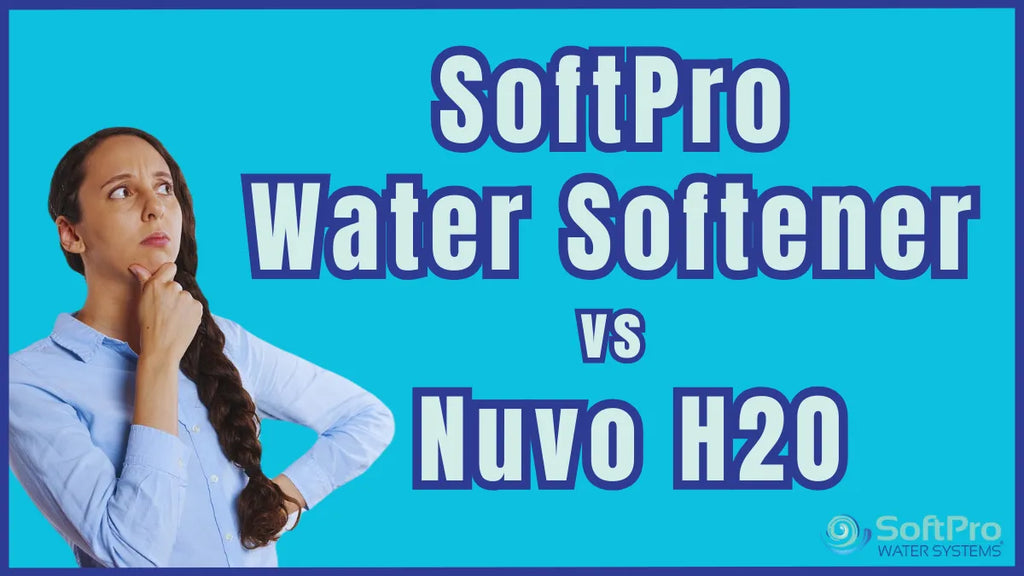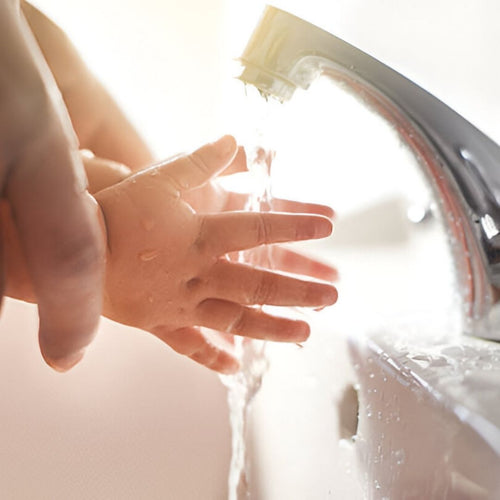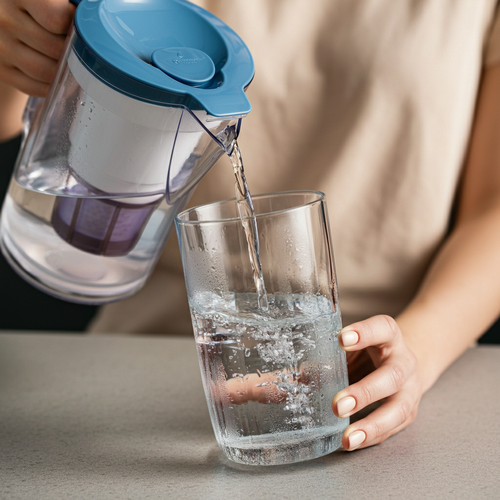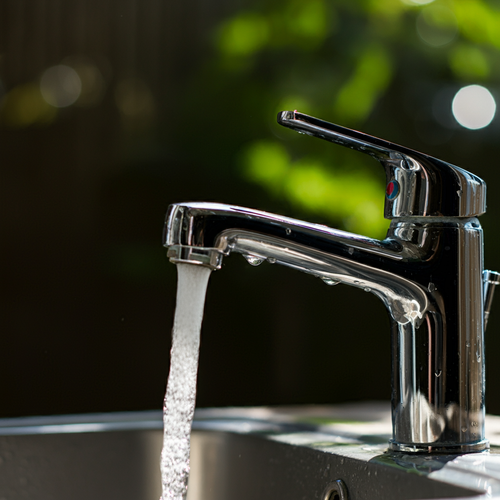Understanding Hard Water and Water Softener Solutions
Living with hard water can be a real headache. From scale buildup on appliances to dry, itchy skin, the minerals present in hard water can cause a multitude of problems in your home. Luckily, water softeners offer a reliable solution to combat these issues and restore the balance of your water.
But not all water softeners are created equal. Two popular brands, SoftPro and Nuvo H2O, offer distinct technologies and features, making the choice between them a crucial one. To navigate this decision, we need to first understand the nature of hard water and how different softeners address its challenges.
What is hard water?
Hard water is characterized by high levels of dissolved minerals, primarily calcium and magnesium. These minerals, while essential for health, can cause several problems in your home:
- Scale buildup: Mineral deposits form on pipes, faucets, and appliances, reducing efficiency and shortening their lifespan.
- Soap scum: Hard water reacts with soap, forming an insoluble film that leaves dishes and clothes feeling filmy and unclean.
- Dry skin and hair: Mineral deposits can strip natural oils from your skin and hair, leaving them feeling dry and irritated.
- Reduced appliance performance: Scale buildup can clog appliance filters and heating elements, impacting their efficiency and energy consumption.
How do water softeners work?
Water softeners essentially remove the hardness minerals from your water supply. There are two main technologies used:
- Ion exchange: This traditional method uses resin beads containing sodium ions. As hard water flows through the resin, the calcium and magnesium ions are exchanged for sodium, resulting in softened water.
- Template Assisted Crystallization (TAC): This innovative technology, used by Nuvo H2O, utilizes a unique template media to attract and trap the hardness minerals, causing them to crystallize and form a removable sediment.
Why compare SoftPro and Nuvo H2O?
Both SoftPro and Nuvo H2O are established brands with strong reputations in the water softener market. However, they take different approaches to softening water, offering distinct advantages and disadvantages:
- SoftPro: Known for its reliable and effective ion exchange technology, SoftPro softeners offer high grain capacity and efficient performance. However, they require regular salt regeneration and can produce some wastewater.
- Nuvo H2O: The innovative TAC technology in Nuvo H2O softeners boasts eco-friendliness, eliminating the need for salt and reducing wastewater generation. However, their grain capacity and flow rates tend to be lower compared to traditional ion exchange systems.
By understanding these key differences, we can delve deeper into the specific capabilities of each brand and determine which one best suits your needs.
Technology Comparison: Salt-based vs. Salt-free
Diving deeper, let's explore the core technologies behind SoftPro and Nuvo H2O water softeners:
SoftPro's Ion Exchange
- Mechanism: Resin beads loaded with sodium ions attract and exchange calcium and magnesium ions from the water, producing softened water.
- Advantages:
- High grain capacity: Handles large amounts of hard water before regeneration.
- Efficient performance: Delivers consistent softening with minimal flow rate reduction.
- Proven technology: Reliable and widely used in water softeners for decades.
- Disadvantages:
- Requires regular salt regeneration: Salt replenishment is necessary to recharge the resin.
- Wastewater production: Some brine wastewater is generated during regeneration.
- Potential environmental impact: Salt usage and wastewater discharge raise concerns for eco-conscious users.
Nuvo H2O's Template Assisted Crystallization (TAC)
- Mechanism: Unique template media attracts and traps hardness minerals, causing them to crystallize and form a removable sediment.
- Advantages:
- Salt-free operation: Eliminates the need for salt and associated costs, making it eco-friendly.
- Reduced wastewater generation: Produces minimal wastewater compared to ion exchange systems.
- Lower maintenance: No salt regeneration required, simplifying maintenance.
- Disadvantages:
- Lower grain capacity: Handles smaller volumes of hard water before needing to clean the sediment container.
- Potentially lower flow rates: Can experience slight flow rate reduction compared to high-performance ion exchange systems.
- Relatively new technology: Less established compared to traditional ion exchange, with some users reporting initial learning curves.
Considerations
Choosing between these technologies depends on your priorities:
- High water hardness: If you have very hard water, SoftPro's high grain capacity might be preferable.
- Eco-consciousness: Nuvo H2O's salt-free operation aligns with environmental concerns.
- Maintenance: Nuvo H2O's simpler maintenance might be attractive for busy homeowners.
- Flow rate: If consistent high flow rates are crucial, SoftPro might be the better choice.
Understanding these nuances will guide you towards the technology that best fits your specific needs and preferences.
Performance Comparison: Effectiveness and Efficiency
Now that we've examined the underlying technologies, let's analyze how SoftPro and Nuvo H2O stack up in terms of performance:
Hard Water Removal Effectiveness
- Grain Capacity: This measures the amount of hard water a softener can treat before needing regeneration or cleaning. SoftPro generally boasts higher grain capacities, meaning they can handle larger volumes of hard water before maintenance. Nuvo H2O, while effective, tends to have lower capacities, requiring more frequent sediment container cleaning.
- Independent Testing: Studies by organizations like the Water Quality Association (WQA) can provide insights into real-world performance. Comparing WQA certifications and user reviews for both brands can offer valuable data points.
Flow Rate and Efficiency
- Flow Rate: Both brands offer a range of models with varying flow rates. SoftPro generally delivers higher flow rates, ensuring minimal impact on water pressure. Nuvo H2O, while steadily improving, may experience slight flow reductions in some models.
- Energy Consumption: Both brands strive for energy efficiency, with newer models featuring advanced features like variable speed pumps. Comparing energy ratings and user experiences can help determine the more energy-efficient option for your needs.
Maintenance Requirements
- Regeneration: SoftPro's ion exchange technology requires regular salt regeneration, adding to maintenance tasks and costs. Nuvo H2O's TAC system eliminates the need for regeneration, simplifying maintenance and lowering ongoing expenses.
- Sediment Cleaning: Nuvo H2O requires periodic cleaning of the sediment container, which is generally a less involved process compared to SoftPro's regeneration.
Considerations
- Water Hardness Level: For very hard water, SoftPro's higher grain capacity might be advantageous.
- Water Usage: If high water flow rates are essential, SoftPro's performance might be preferred.
- Maintenance Convenience: Nuvo H2O's simplified maintenance might be attractive for those seeking minimal upkeep.
- Energy Efficiency: Comparing energy ratings and user experiences can help choose the more eco-friendly option.
By weighing these factors against your specific needs and preferences, you can determine the brand that offers the most efficient and effective performance for your water softening needs.
Feature Comparison: Finding the Right Fit for Your Needs
Beyond the core technologies and performance, additional features can play a decisive role in choosing the right water softener for your home. Let's explore the unique offerings of SoftPro and Nuvo H2O:
Filtration Capabilities and Additional Water Treatment
- SoftPro: Many SoftPro models offer additional filtration stages for sediment, chlorine, and other contaminants, providing comprehensive water purification beyond just softening.
- Nuvo H2O: While primarily focused on softening, some Nuvo H2O models offer built-in pre-filtration or the option to connect to external filtration systems for added water treatment.
Smart Home Compatibility and Automation
- SoftPro: Some high-end SoftPro models offer Wi-Fi connectivity and smartphone app control, allowing for remote monitoring, scheduling regeneration cycles, and adjusting settings.
- Nuvo H2O: Nuvo H2O currently doesn't offer extensive smart home integration, although some models feature basic LED indicators for system status.
Warranty Options and Customer Support
- SoftPro: SoftPro offers a range of warranty options varying by model, typically covering parts and labor for several years. Customer support is available through phone, email, and online resources.
- Nuvo H2O: Nuvo H2O provides warranties similar to SoftPro, with phone and email support readily available. Additionally, they offer a network of authorized dealers who can provide in-person assistance.
Considerations
- Water Purification Needs: If comprehensive water treatment is a priority, SoftPro's filtration options might be appealing.
- Tech Savvy Users: Those seeking smart home integration might prefer SoftPro's app-controlled models.
- Warranty Coverage and Support: Both brands offer comparable warranty options and customer support. Choose the brand with the warranty terms and support channels that best suit your needs.
Ultimately, the ideal feature set depends on your individual priorities and lifestyle. Prioritize features that address your specific water concerns and technological preferences to find the perfect fit for your home.
Price and Cost-effectiveness
Deciding between SoftPro and Nuvo H2O involves more than just initial purchase price. Let's analyze the long-term cost picture, considering both upfront and ongoing expenses:
Upfront Costs
- SoftPro: Generally falls in the mid-to-high price range, with cost varying based on model features and capacity. Installation costs may add to the initial investment.
- Nuvo H2O: Tends to be priced in the high-end range, with salt-free technology commanding a premium. However, installation is often easier and potentially DIY-friendly, reducing additional costs.
Ongoing Expenses
- SoftPro: Requires regular salt replenishment, adding to the annual cost. Additionally, regeneration cycles can increase water and electricity bills slightly.
- Nuvo H2O: Eliminates salt costs, making it more budget-friendly in the long run. However, sediment container cleaning might incur occasional expenses depending on the frequency and chosen method.
Return on Investment (ROI)
- SoftPro: Potential savings from improved appliance efficiency and reduced wear and tear can offset the ongoing costs.
- Nuvo H2O: The eco-friendliness and lower maintenance can be attractive long-term benefits, alongside potential savings from reduced water and energy consumption.
Considerations
- Budget: If initial cost is a major concern, consider starting with a more affordable SoftPro model and upgrading later as your budget allows.
- Long-term Savings: Nuvo H2O's salt-free operation and reduced maintenance can lead to significant cost savings over time, making it the more cost-effective option for budget-conscious users in the long run.
- Environmental Impact: Nuvo H2O's eco-friendliness might be a deciding factor for environmentally conscious consumers willing to pay a premium for sustainability.
Ultimately, the cost-effectiveness champion depends on your individual priorities and financial considerations. Weigh the upfront costs, ongoing expenses, and potential ROI to determine which brand offers the best value for your unique needs and budget.
Environmental Impact: A Green Choice for Your Home
In today's environmentally conscious world, choosing a water softener that aligns with your green values is crucial. Let's compare the environmental footprints of SoftPro and Nuvo H2O:
Salt Usage and Wastewater
- SoftPro: Traditional ion exchange systems use salt for regeneration, generating brine wastewater that needs proper disposal. This raises concerns about salt pollution and potential environmental impacts.
- Nuvo H2O: The innovative TAC technology eliminates the need for salt, reducing wastewater generation and minimizing environmental impact associated with salt production and disposal.
Energy Consumption
- SoftPro: Regeneration cycles can increase energy consumption slightly, impacting your carbon footprint. However, newer models with advanced features like variable speed pumps can improve energy efficiency.
- Nuvo H2O: Generally exhibits lower energy consumption due to the absence of regeneration cycles and potentially lower flow rates. Some models even boast energy-saving features like automatic shut-off.
Resource Usage and Sustainability
- SoftPro: Requires regular salt replenishment, contributing to resource extraction and transportation.
- Nuvo H2O: TAC technology eliminates the need for ongoing salt purchases, reducing resource consumption and promoting sustainability.
Considerations
- Environmental Values: If eco-friendliness is a top priority, Nuvo H2O's salt-free operation and lower environmental impact might be the deciding factor.
- Local Wastewater Regulations: Some regions have stricter regulations regarding brine wastewater disposal, making Nuvo H2O a more compliant option.
- Energy Efficiency: Both brands offer energy-efficient models. Compare energy ratings and user experiences to choose the option that best aligns with your energy-saving goals.
Choosing an eco-friendly water softener goes beyond just the brand. Consider adopting water-saving practices like shorter showers and fixing leaky faucets to further reduce your environmental impact.
Choosing the Right Water Softener for You
Reaching a definitive "winner" between SoftPro and Nuvo H2O is impossible, as the ideal choice depends on your unique priorities, water conditions, and budget. However, by analyzing each brand's strengths and weaknesses, we can provide you with valuable insights to guide your decision:
Choose SoftPro if
- You have very hard water requiring a high grain capacity.
- Consistent high flow rates are crucial for your needs.
- You prefer the comprehensive water purification capabilities of additional filtration stages.
- You value the convenience of remote monitoring and app control offered by high-end models.
Choose Nuvo H2O if
- Eco-friendliness and salt-free operation are top priorities.
- You prefer minimal maintenance and simplified operation.
- Potential long-term cost savings are appealing.
- Energy efficiency and reducing your carbon footprint are important concerns.
Ultimately, the best water softener for you is the one that best addresses your specific needs and priorities. Consider the following factors when making your final decision:
- Water Hardness: Analyze your water hardness level to determine the required grain capacity.
- Budget: Weigh the initial purchase price against ongoing costs and potential long-term savings.
- Features: Choose features that align with your water treatment needs and desired level of technological integration.
- Environmental Impact: Consider the salt usage, wastewater generation, and energy consumption of each option.
By carefully evaluating your needs and preferences, you can confidently choose the water softener that delivers the perfect balance of performance, value, and eco-friendliness for your home. Remember, investing in a water softener is an investment in the health, comfort, and longevity of your appliances and your own well-being. Choose wisely, and enjoy the benefits of soft, pure water throughout your home!
You can also read more articles about SoftPro compared to other brands, including SoftPro vs NorthStar and SoftPro vs On The Go.


















![Aldex Premium 10% Cross Link Resin for Water Softener [High Capacity]-SoftPro® Water Systems](http://www.softprowatersystems.com/cdn/shop/files/Aldex_10_Cross_Link_Resin_Premium_High_Capacity_for_Water_Softener_600x.jpg?v=1735853599)





















